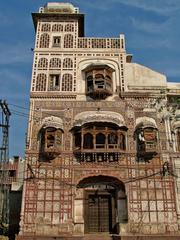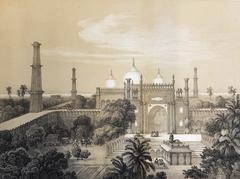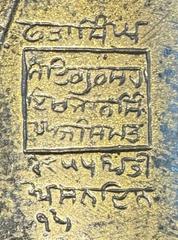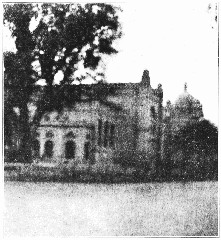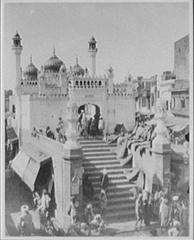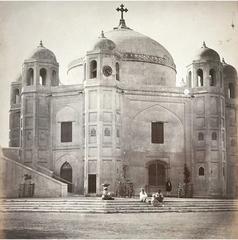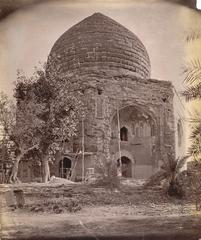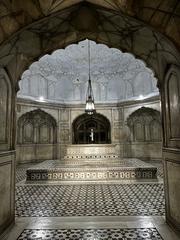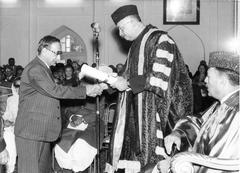
Grand Jamia Mosque Lahore: Visiting Hours, Tickets, and Historical Significance
Date: 04/07/2025
Introduction
The Grand Jamia Mosque in Lahore stands as a monumental testament to Pakistan’s Islamic architectural heritage and cultural identity. As one of the largest mosques in the country and the world, it serves not only as a sacred place of worship but also as a vibrant educational and community hub. Located in Bahria Town, Lahore, and designed by renowned architect Nayyar Ali Dada, the mosque artfully fuses traditional Mughal and Persian motifs with modern design innovations. This guide provides comprehensive visitor information—including visiting hours, ticketing, accessibility, and practical tips—while exploring the mosque’s historical and cultural significance.
For further insights, consult sources such as Guide to Pakistan, Pakyatra, Traveler Trails, and Wikipedia.
Table of Contents
- Historical Background
- Visitor Information
- Social Initiatives and Charitable Work
- Frequently Asked Questions (FAQ)
- Conclusion
- References
Historical Background
Origins and Vision
The Grand Jamia Mosque was conceived as the centerpiece of Bahria Town, Lahore, reflecting the aspirations of both spiritual devotion and architectural grandeur. Architect Nayyar Ali Dada envisioned a mosque that would pay homage to South Asia’s Islamic architectural legacy, creating a space that is spiritually uplifting and culturally resonant (Guide to Pakistan; Pakyatra).
Construction and Architectural Features
Construction began in the early 2010s and culminated in its inauguration on Eid al-Adha, 6 October 2014. The mosque’s creation involved over four million handcrafted Multani tiles, custom Turkish carpets, and more than 50 Persian chandeliers, reflecting a commitment to local artistry and international influences (Wikipedia; The Express Tribune). The main prayer hall accommodates 25,000 worshippers, while the expansive courtyard can hold an additional 45,000, making it one of the world’s largest mosques (Visit Lahore). Four minarets, each 165 feet tall, and a grand main dome with 20 smaller domes create a striking skyline.
The design draws inspiration from Lahore’s Badshahi Mosque and Wazir Khan Mosque, integrating traditional Mughal and Persian elements with modern engineering. Materials like “Brick Gutka” from Multani clay were chosen for their authenticity and durability (Guide to Pakistan).
Cultural and Community Role
Beyond its architectural marvel, the mosque serves as a community anchor. It hosts daily prayers, Friday congregations, Eid services, and special religious events. The mosque’s educational facilities include an Islamic history museum, a library with rare manuscripts, and an art gallery featuring exquisite calligraphy (Traveling.com.pk). The mosque is a focal point for both spiritual gatherings and cultural exchange, welcoming visitors of all backgrounds outside prayer times (Pakistan Today).
Preservation and Legacy
Ongoing conservation efforts ensure the mosque’s intricate tilework and structural features are preserved for future generations. Its prominence has boosted local tourism, contributing to Lahore’s economy and reinforcing the city’s reputation as a center of Islamic art and learning (Pakyatra; Traveling.com.pk).
Visitor Information
Visiting Hours and Entry
- General Visiting Hours: Daily from 4:00 AM to 10:00 PM (Traveler Trails).
- Non-Muslim Visitors: Welcome outside prayer times. Non-Muslims are not permitted in the main prayer hall during prayers.
- Entry Fee: Free for all visitors. Special events may require advance booking and a fee.
Accessibility
The mosque is fully accessible, with ramps, elevators, and wide pathways for differently-abled visitors. Ablution and restroom facilities are also designed for accessibility.
Getting There and Facilities
- Location: Bahria Town Main Blvd, Sector C Juniper Block, Lahore, Punjab (Traveler Trails).
- Transport: Easily accessible by private car, taxi, or ride-hailing services. Ample and secure parking is available.
- Facilities: Prayer halls for men and women, educational rooms, ablution areas, restrooms, drinking water, and shaded waiting spots. The mosque complex also houses an Islamic art gallery and museum.
Dress Code and Etiquette
- Men: Long trousers and sleeved shirts (no shorts or sleeveless tops).
- Women: Modest attire with long sleeves, long skirts or trousers, and a headscarf (headscarves may be available on-site).
- Footwear: Remove shoes before entering prayer halls.
- Behavior: Maintain silence, respect restricted areas, and seek permission before photographing people.
Guided Tours and Photography
- Guided Tours: Available upon request. Contact +92 300-4121307 for bookings.
- Photography: Permitted in most areas; avoid flash in prayer halls and respect worshippers’ privacy.
Nearby Attractions
- Badshahi Mosque
- Lahore Fort
- Shalimar Gardens
- Old City Bazaars
Bahria Town also offers parks, shopping centers, and dining options.
Social Initiatives and Charitable Work
The Grand Jamia Mosque is actively involved in community outreach and social welfare. It organizes food distribution drives, medical camps, scholarships, and vocational training programs, especially during Ramadan and times of crisis (ARY News). These efforts are supported by donations and reflect the mosque’s commitment to holistic community development.
Frequently Asked Questions (FAQ)
Q: What are the visiting hours?
A: Open daily from 4:00 AM to 10:00 PM; non-Muslims may visit outside prayer times.
Q: Is there an entry fee?
A: Entry is free; special events may require booking and a fee.
Q: Are non-Muslims allowed inside?
A: Yes, except during prayer times and in restricted areas.
Q: Is the mosque wheelchair accessible?
A: Yes, with ramps and elevators.
Q: What is the dress code?
A: Modest attire is required; headscarves for women and covered arms/legs for all.
Q: Can I take photographs?
A: Yes, but avoid flash in prayer areas and obtain permission before photographing people.
Conclusion
The Grand Jamia Mosque Lahore stands as a harmonious blend of spiritual grandeur, architectural brilliance, and community engagement. Whether you are visiting for worship, education, or tourism, the mosque offers an enriching experience and a window into Lahore’s vibrant Islamic heritage. Plan your visit by checking the latest hours, respect local customs, and explore nearby historical attractions for a comprehensive cultural journey.
For up-to-date information, ticket bookings, and guided tours, visit the mosque’s official website or contact the administration directly (Traveler Trails).
Enhance your travel experience by downloading the Audiala app for real-time updates and exploring more on Lahore’s historical sites. Follow us on social media for the latest travel tips and guides.
References and Further Reading
- Guide to Pakistan
- Pakyatra
- Wikipedia
- Lake City Grand Mosque
- Traveler Trails
- The Express Tribune
- Visit Lahore
- Pakistan Today
- ARY News
- Traveling.com.pk
- Slideshare
- Zameen Blog

